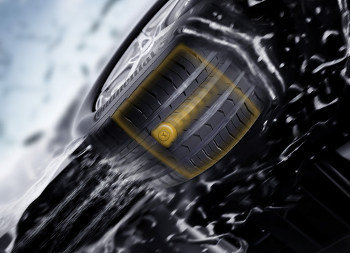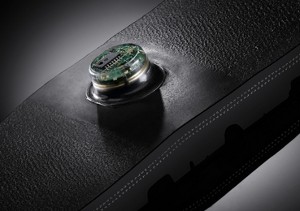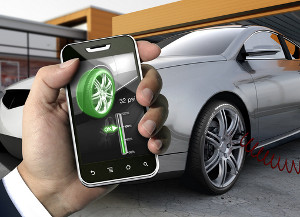 |
| March 05, 2013 | Volume 09 Issue 09 |
Designfax weekly eMagazine
Archives
Partners
Manufacturing Center
Product Spotlight
Modern Applications News
Metalworking Ideas For
Today's Job Shops
Tooling and Production
Strategies for large
metalworking plants
Wheels:
Intelligent tire sensors aim to detect vehicle weight

With the future generation of Continental tire sensors, which will be fitted directly underneath the tread of the tire, the tire pressure monitoring system can accurately detect the size of contact area and calculates the vehicle load.
The owners of most cars don't usually think about maximum car payloads. Maybe they do when everything and everybody is loaded up for summer vacation, or most of the soccer team needs a lift to the game, or the minivan is jam packed with a freshman's college move-in supplies, but other that, who pays attention?
But then again, how can you tell, quickly and easily, when your vehicle is fully loaded?
Well Continental is aiming to change all that by widening the range of functions made available by its tire pressure sensors.
Where in the past only special vehicles were capable of checking permitted axle loads, future vehicles will be able to calculate this information automatically on the basis of data from their tire pressure sensors.
"In the past, it was more or less up to drivers to 'guesstimate' to the best of their abilities whether or not the maximum permitted payload of a car had already been reached," says Andreas Wolf, head of the Body & Security Business Unit at Continental. "In the future, the vehicle will be able to tell the driver after just a few hundred meters whether the payload has already exceeded the maximum permitted limit, or whether the tire pressure would simply need to be adjusted accordingly. In this way, our tire pressure sensors will not only help to save fuel, but also offer active assistance in terms of vehicle safety."

Future tire sensors will be fitted directly underneath the tread of the tire.
The technology behind load detection
For the automatic load detection system, the engineers at Continental take advantage of the physical properties of vehicle tires. The contact patch of the tire increases as a result of the weight bearing down on the tire. With the future generation of sensors, which will be fitted directly underneath the tread of the tire, the tire pressure monitoring system can accurately detect the size of this contact area.
With every revolution of the tire, the sensor registers the rolling characteristics of the tire on the road. Based on the existing tire pressure and precise data about the tires fitted, the system is able to inform the driver after just a few hundred meters if a change in tire pressure would be appropriate for the current payload.
Load detection as the basis for many further improvements
Load detection will be the basis for some more vehicle improvements. Current assistance systems relating to vehicle dynamics are designed to provide occupants with the highest level of comfort and safety benefits independently from the load conditions. Assistance systems today are always working with the assumption of a maximum payload.

With Continental's Filling Assistant, Smartphones will help drivers to inflate the tires correctly in the future.
As soon as systems like Electronic Stability Control (ESC), Emergency Steer Assist, or Autonomous Emergency Braking Assistant can incorporate information about the actual vehicle weight in their responses, this will enable them to provide even more efficient comfort and support for drivers.
Additional tire monitoring functions enter series production
Alongside the major advantage of direct-measuring tire pressure monitoring systems (providing drivers with accurate, tire-specific information about the actual tire pressure) additional functions are now also being implemented step by step in series-production vehicles. For example, one Asian manufacturer now offers customers a subfunction of the Filling Assistant presented by Continental: a first-vehicle model now automatically generates a short acoustic signal during filling once the required tire pressure has been reached. This ensures that the tires always run on the correct pressure, even if they are filled using non-calibrated filling equipment. Rolling resistance is reduced as a result, and the tires perform to their maximum capability in terms of safety and comfort.
Source: Continental
Published March 2013
Rate this article
View our terms of use and privacy policy
